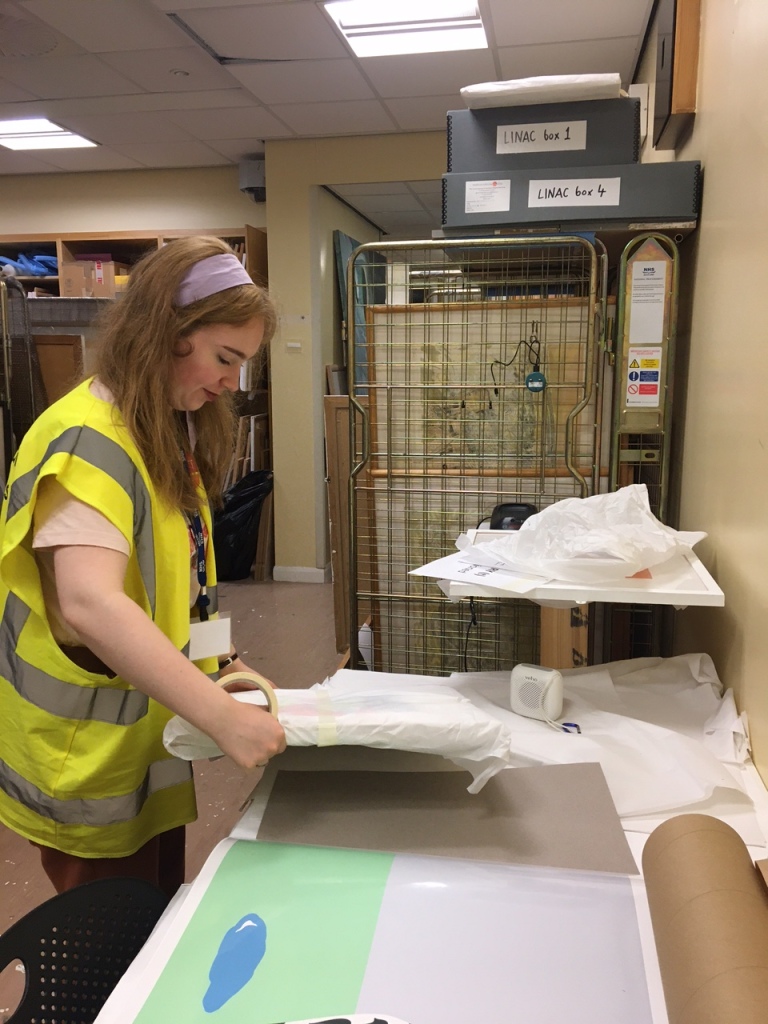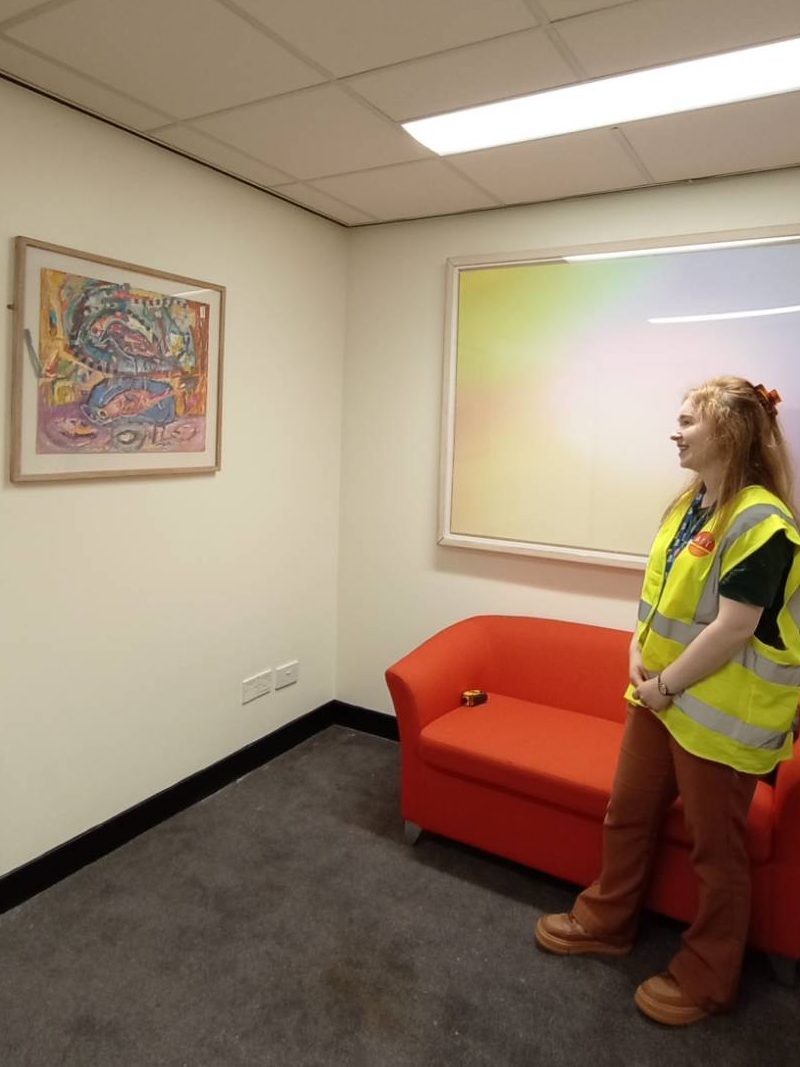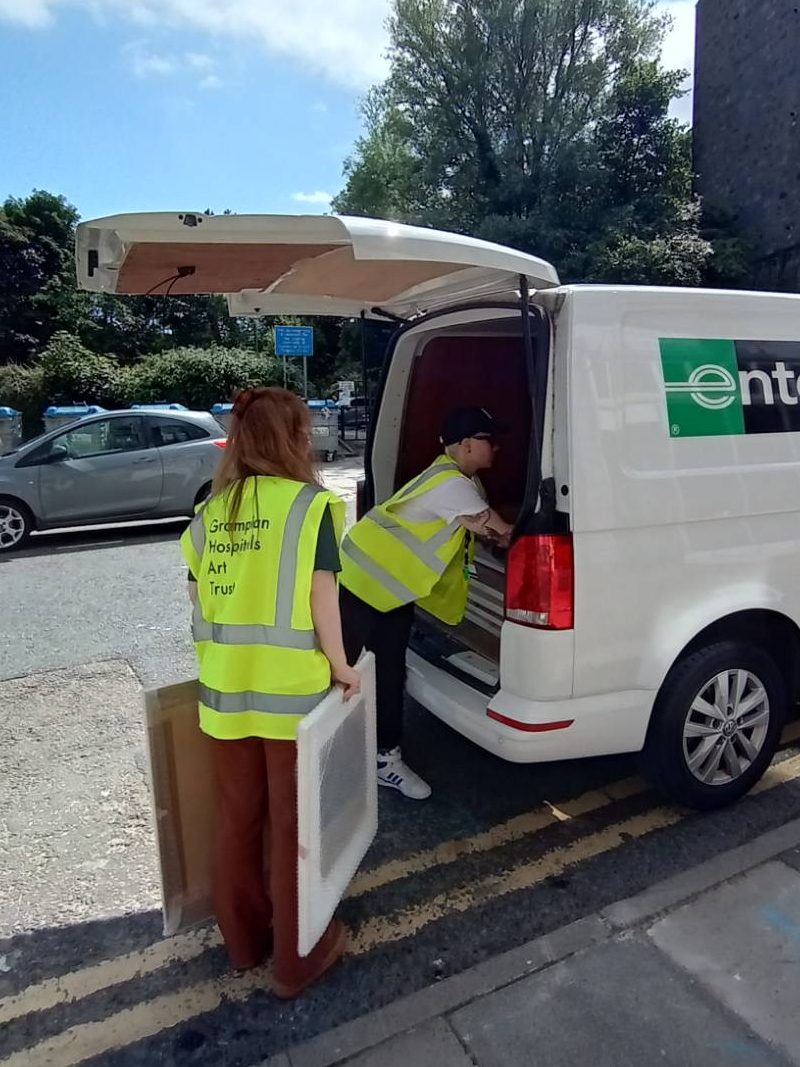On the 6th of June, I stepped into the Aberdeen Royal Infirmary to begin my summer placement – not as a medical student, but as part of my Museum Studies course. I began working several days a week with the Grampian Hospital Arts Trust (GHAT), shadowing the collections and exhibitions team on a variety of projects both inside and outside the hospital.
As a component of my master’s degree at the University of Aberdeen, the twenty-day placement gave me the opportunity to gain relevant knowledge and skills in an authentic workplace environment, and acted as a gateway into the dynamic and fascinating world of the arts and heritage sector.
Artwork is exhibited in various hospitals throughout the Grampian area; in public hallways, private offices and outdoor spaces. They take the form of paintings, prints, sketches, textiles and sculptures. GHAT’s job is to acquire, store, conserve, manage, and install these artworks.
Many of the collections are displayed throughout the Aberdeen Royal Infirmary, but there are also two dedicated exhibition spaces. Here, artists collaborate with the GHAT team to create dynamic and exciting displays, which visitors can enjoy and share in the joy of experiencing art. GHAT also frequently spotlights local artists, with recent exhibitions featuring artwork from Scottish art school graduates. Much of the work exhibited in the hospitals is distinctly Aberdonian in style, depicting both serene coastal landscapes alongside industrial and urban scenes; often familiar and recognisable to onlookers.
My work with GHAT was incredibly varied, which is part of what made it so valuable. Deep within the hospital is a storage facility holding almost 1000 pieces of art. The collections, amassed through donation, purchase and commissions, are varied in style and subject matter.
I became increasingly familiar with the collections, as I edited the online catalogue, where information about each piece is kept, and learned about conservation practices, acquisitions, and accessioning. As well as this, I assisted with installing various pieces of art, both in an exhibition space, and within hospital rooms. This practical experience, which involved manual handling, safely transporting large objects for install, and helping organise and retrieve artwork in the vast stores, helped me understand the everyday nitty-gritty of working with art collections.
For me, one of the most rewarding aspects of the placement was gaining a real understanding of how impactful art and its display can be, especially within the unusual exhibition setting of a hospital. These places are so often associated with anxiety and art can have a real positive impact on the health and well-being of visitors, by easing stress, sparking creativity or communication, and creating a temporary distraction from worries. The GHAT team have a significant role to play in making this happen, and constantly engage with staff and visitors, which gives the display spaces a collaborative feel. In this setting, remaining aware of your audience and how they will think or feel about what they see, is of the utmost importance.
In this way, exhibiting varied and interesting artwork within a hospital setting invites the public into the world of art, showing that anyone, regardless of background or knowledge, can appreciate art, thus making it a shared, inclusive experience.
Working with GHAT has really helped me appreciate how art and heritage organisations can reach out to the public through their collections, encouraging others to experience, enjoy, ponder, question, and discuss their displays. Art itself can create connections and channels of communication, whether between the object and the visitor, from one visitor to another, or within oneself, creating meaning and evoking emotions.
Written by Amy Hart, University of Aberdeen Museum Studies MLitt student



